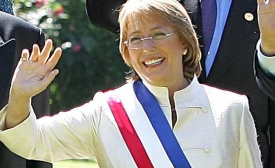public diplomacy
The Huffington Post headline “Saboteur Sen. Launching War Push” on December 19 and the enraged Jewish reactions to it escaped intense scrutiny because of end-of-the-year vacations and the media’s need to sum up 2013. The incendiary headline, however, should serve as a shot across the bow, intended or not, about the malevolent maelstrom that could engulf the American Jewish establishment in the wake of its unequivocal and nearly unanimous support for new sanctions on Iran.
I had written a couple months ago about the seemingly uncoordinated and scattershot approach in which U.S. embassies engage in the name of public diplomacy. An interlocutor pointed me to a speech delivered by retired Foreign Service officer Donald Bishop to the Council of American Ambassadors earlier this fall. While so many practitioners of public diplomacy circle the wagons to protect budgets and the system they know and in which they thrive, Bishop speaks directly.
The Third Plenary Session of the 18th Central Committee of the Chinese Communist Party (CCP) closed mid-November, but it still keeps China-watchers awake. Foreign analysts were rather underwhelmed by the immediate outcomes: a bland, boilerplate communique issued on November 12.
I had the pleasure and privilege to attend yesterday’s meeting of the Broadcasting Board of Governors as a member of the public. The session featured two fascinating presentations and discussions. First, Voice of America Director David Ensor gave an inspirational presentation on the mission, goals, accomplishments, and challenges facing the Voice of America.
Every two years China’s quest to boost the popularity of its brand is marked by a well- publicized media event: the Beijing Olympics 2008, EXPO 2010 in Shanghai, the Miss World contest 2012 in Ordos. Looking ahead, China plans to host the Youth Olympic Games in Nanjing and a global tourist summit in 2014.

During the memorial service for former South African president Nelson Mandela, as tens of thousands gathered in the FNB stadium in Johannesburg and millions more watched on television, an entirely different story emerged: the ten-second interaction between U.S. President Barack Obama and Cuban President Raul Castro.
During the memorial service for former South African president Nelson Mandela, as tens of thousands gathered in the FNB stadium in Johannesburg and millions more watched on television, an entirely different story emerged: the ten-second interaction between U.S. President Barack Obama and Cuban President Raul Castro.

Congratulations to Michelle Bachelet, a supporter of global public diplomacy and contributor to CPD, on her re-election to the Chilean presidency.







